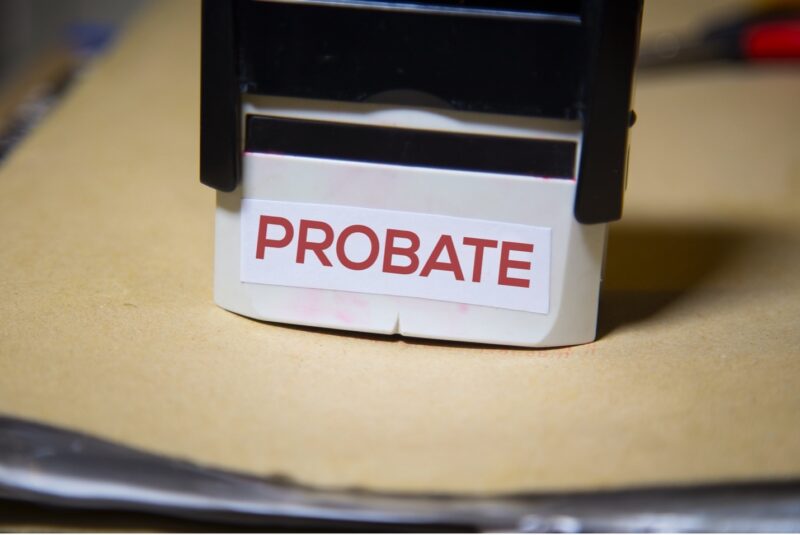Losing a loved one can be devastating. There are also legal implications after someone dies, and those left behind by a loved one only have a limited amount of time to try to work through the estate despite dealing with their grief. If you are wondering what the probate process entails or have recently lost a loved one and need assistance in navigating the probate process, consider reaching out to a knowledgeable probate lawyer from Von Rock Law for help. You can reach us by calling (866) 720-0195.
What Is Probate?
Probate is the court-supervised process that occurs after someone dies. The probate process determines how the deceased’s affairs will be handled and how their assets will be distributed. There are many steps involved in the probate process
When Is Probate Required?
Probate is generally required when someone dies owning an estate. For the purposes of probate, an estate is the property that a person owns at the time of their death that is not automatically transferred. In California, a simplified procedure may be used if the value of the estate is less than $184,500, the maximum limit per 2022 laws, subject to change in future years. The simplified procedure is faster and requires minimal supervision from the court.
How Does the Probate Process Start?
The executor who is named in the will files a petition and the original will with the Probate Court in California in the county where the deceased lived before their death. The petition asks the will to be probated and for the executor to be appointed to formally act on the estate’s behalf.
If there is no will, an interested person files a petition asking for the estate to be probated and asks the court to appoint them as the administrator.
The Probate Court determines if the will is legally valid, which typically requires showing the deceased was at least 18 years old and is of sound mind, as defined by California law. This may require reviewing self-proving affidavits that were attached to the will or asking the witnesses about what they observed.
Next, the court grants the executor or administrator letters testamentary to act on the estate’s behalf. The executor may also have to post bond, which is an insurance policy that protects beneficiaries in case the executor makes a mistake that harms them financially during the probate process.
Steps Involved in the Probate Process
The probate process consists of several important steps, including:
Gathering Information
The executor must begin by learning about the estate. The executor will ultimately collect and safeguard assets, pay debts and expenses, provide required legal notices, and finally distribute the property to beneficiaries. They can begin the process by collecting information such as:
- Copies of the death certificate
- Bills
- Statements for checking accounts, retirement accounts, and other financial accounts
- Safe-deposit box records
- Credit card statements
- Letters and other correspondence from loved ones
- Public benefit information
- Income tax returns
- Pay stubs
Providing Notice
The executor must provide notice to all the heirs and beneficiaries. Beneficiaries are people specifically named in the will, while heirs are the people who would be entitled to inherit at law if there is no will. The executor is responsible for formally notifying the heirs and beneficiaries that the petition has been filed. This gives them the opportunity to object to the petition and challenge the will.
Identifying Assets
Next, the executor identifies all the deceased’s property. The executor is responsible for safeguarding the property. This may require the executor to take physical possession of the property, move the property to a safe location, such as a storage unit, or purchase insurance for the property.
The executor is responsible for identifying all the probate assets and determining their value. Probate assets might include:
- Real property, such a primary home, a vacation home, land, or a real estate lease of at least 10 years or with an option to buy;
- Personal property, such as vehicles, jewelry, art, furnishings, and collections;
- Financial accounts, including bank accounts, online financial accounts, reward accounts, stocks, bonds, investment accounts, and digital accounts; and
- Intangible property, such as intellectual property.
Only the assets owned by the deceased’s estate need to be identified and valued. The deceased may have owned property that transferred to other people outside the probate process, such as:
- Real property that was owned as community property with a spouse or as joint tenants with the right of survivorship;
- Financial accounts that are owned jointly or have a payable on death designation;
- Retirement accounts and insurance policies that transfer according to a beneficiary designation form; and
- Assets that were transferred to a trust before or at the time of death.
Completing an Inventory
Once the executor has identified all the probate assets, the executor can prepare an inventory that itemizes these assets and their values. The California Courts recommend that the inventory consist of the following information:
- A brief description of each asset;
- The value of each asset at the time of death;
- How the asset was owned, such as separately or as community property;
- The portion of the asset the deceased owned; and
- Whether anyone has grounds to file a claim because there is a loan or other debt attached to it.
Paying Off Debt
The executor is also responsible for identifying the deceased’s creditors, providing them notice of the death and the time limit to file a claim, and paying off valid claims with the estate’s property.
It can be difficult to determine who the deceased’s creditors are and whether they have a valid claim. The executor or administrator may need to go through the deceased’s checkbook, email, and mail to determine the creditors at the time of death. A lawyer from Von Rock Law can help determine creditors and whether their claims against the estate are valid.
A final tax return must also be completed.
Distributing the Property
After the debts and other claims are paid from the estate, the executor or administrator can distribute any remaining property to the beneficiaries or heirs. If there is a will, the executor follows the instructions contained in it to provide beneficiaries with the property assigned to them.
If there is no will, the administrator follows the laws of intestate succession, which set out the order and amount of the probate estate each heir is entitled to.
Closing the Estate
The executor will provide a final accounting of their work to the court that details the steps they have taken. The executor will ask the court to approve the probate and close the estate, so they are released from the role of executor.
Contact an Experienced Probate Lawyer for Help
The probate process is a very involved and complex process. An experienced probate lawyer from Von Rock Law can help you fulfill your obligations as executor or administrator, or possibly help you avoid the probate process with careful estate planning. Consider contacting our experienced California estate planning attorneys at (866) 720-0195 to learn more about your legal and financial rights today.




